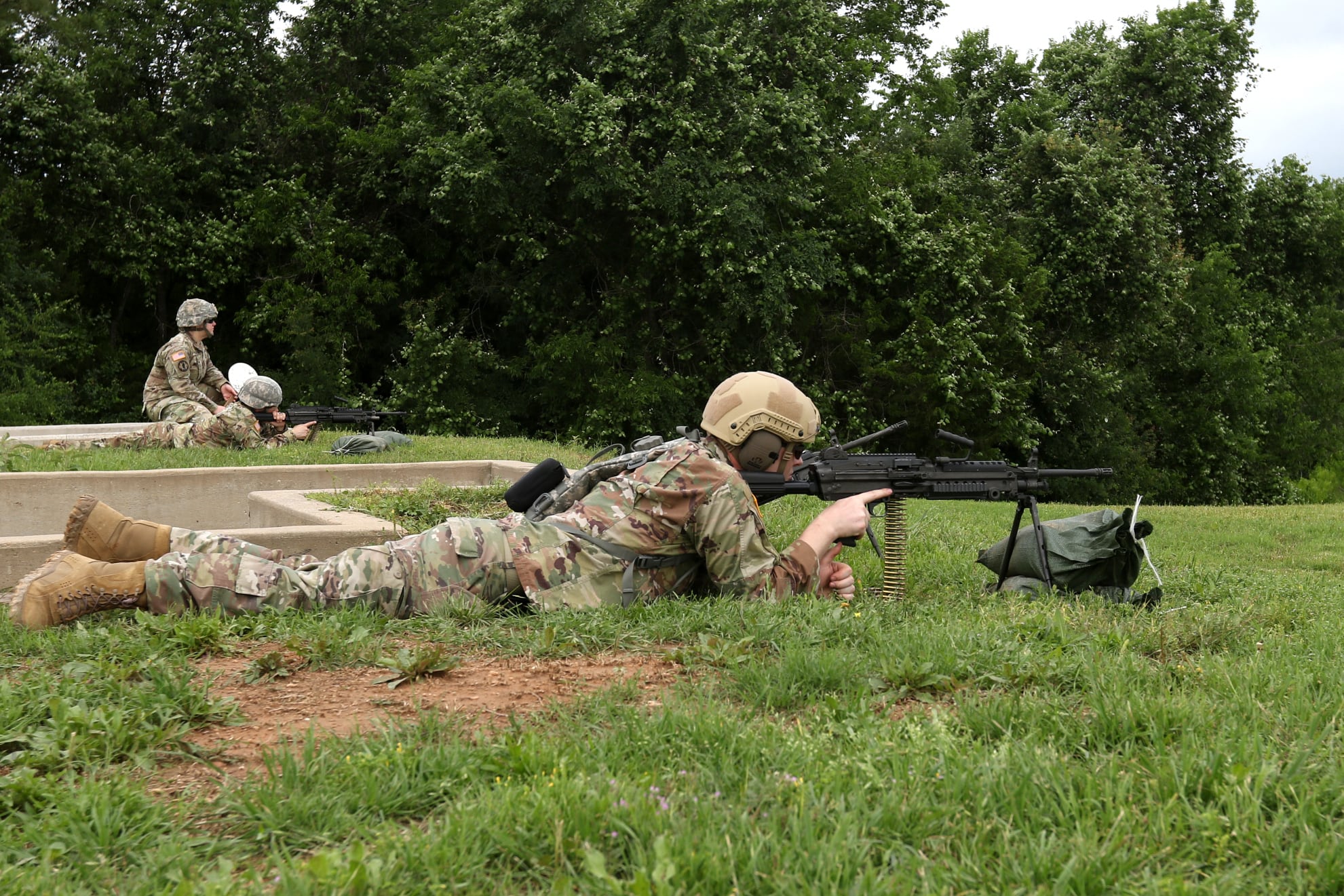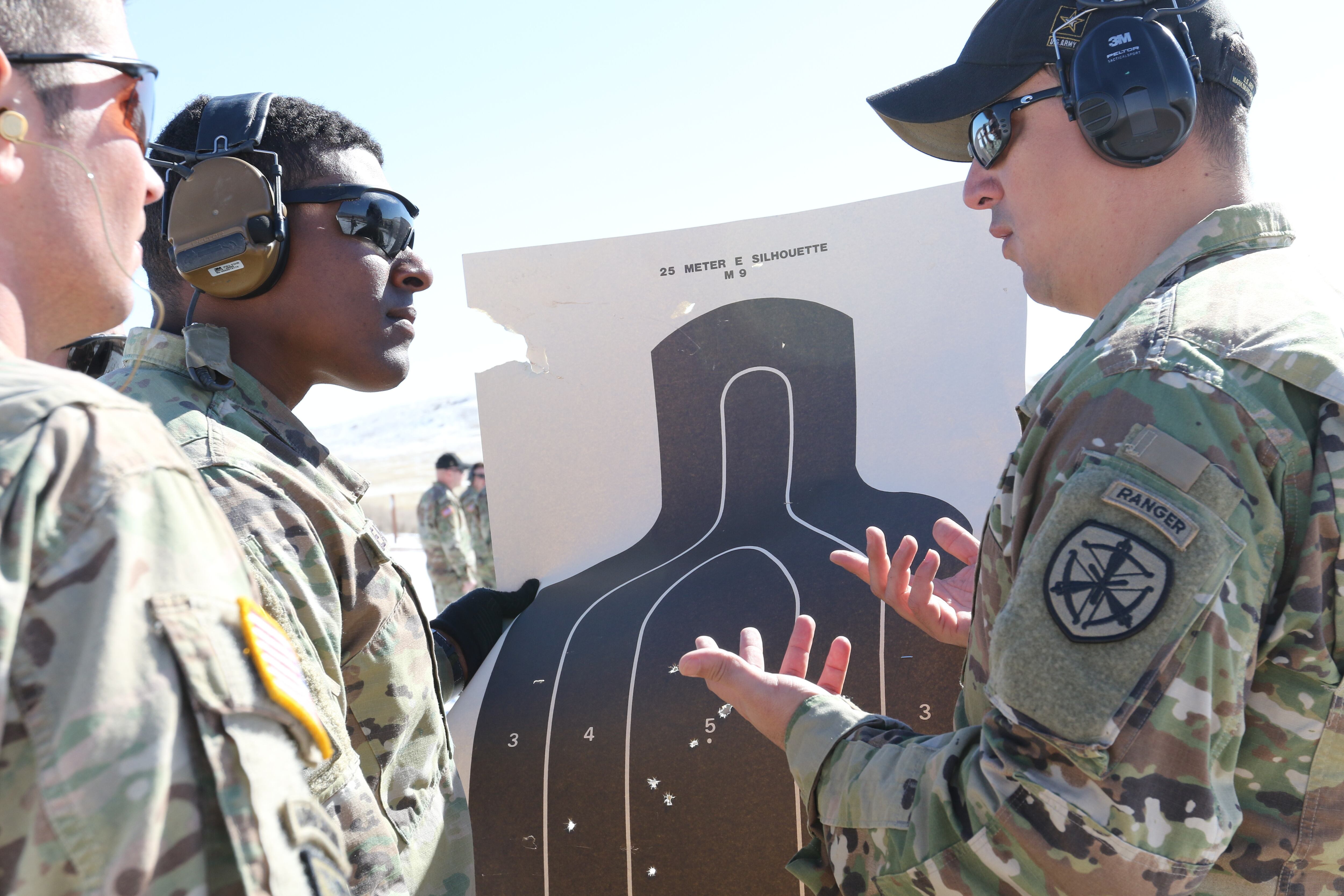Perhaps one of the Army’s best kept secrets, at least among the ranks, is the Army Marksmanship Unit. The soldiers with AMU compete in world-class events, shooting everything from air rifles to shotguns to service weapons and they do action shooting events that replicate combat conditions.
What many soldiers might not know is how integral AMU has been in helping experiment, develop and train the best shooting trainers the Army has to offer and now those trainers can vastly improve marksmanship for soldiers and their units.
Lt. Col. Harris T. Lawrence III and Command Sgt. Maj. Jason Levy spoke with Army Times leading up to the Association of the United States Army annual gathering about what the team and its staff are doing to improve overall marksmanship.
RELATED

Some of that starts at the very beginning, as AMU has trained the trainers who introduce West Point cadets to Army shooting in recent years.
And they’ve had some success.
The past year’s qualifications reached 100 percent of all incoming cadets, a first for the program, Levy said.
Exposure went even beyond shooting scores, Lawrence said. By the end of a few days training, those future Army officers are speaking the same language as the marksmanship instructors, seeing the concepts and practices in action and understanding the value of the training.
“I went back to see at the end of the training cycle and cadets are walking around, using the same terminology that the (Instructors Training Group) uses to train the 101st Airborne Division,” Lawrence said.
While AMU has been involved at some level in basic soldier shooting training and improving those marks for decades, in the past few years they’ve had a hand in helping the Soldier Lethality Cross Functional Team better understand ways to work in higher performance ammunition designs, better shooter ergonomics and how the next wave of soldiers will shoot with a next generation rifle.
That’s because some of the work that went into deciding on the 6.8mm caliber round for the Next Generation Squad Weapon program, which will produce a rifle and automatic rifle in that caliber for the force for the first time, originated with AMU.
Events such as the Army Small Arms Championship in March also give active, Guard and Reserve soldiers a chance to get fresh training to max out the effectiveness of their service weapon and then see who shoots best in the ranks, Levy said.
Lawrence gave the example that while the Army’s physical training test maxes out the run at 2 miles, that doesn’t mean a solder never runs more than 2 miles while training for the test.
Unfortunately, the Army shooting qualifications stop at 300 meters, but the M4 and M16 platforms can hit distances much farther. By training soldiers to shoot to those distances when ranges are available, they increase their confidence at shorter ranges, he said.
The lieutenant colonel has some data backing up their efforts. Short session training provided by his staff has shown consistently to improve total unit shooting scores by between 30 and 50 percent, he told Army Times.
This past year, the unit also began sharing those findings with a distribution list of unit commanders and training entities. The report has spread widely beyond its original audience. That, Lawrence said, is showing him that leaders outside the marksmanship and training community are taking notice of what the unit can provide.
“We validate all of those aspects of marksmanship through the year,” Lawrence said. “We then do a ‘hotwash’ of information through the force, through training venues, et cetera.”
Science is playing a part. Lawrence said that Army researchers frequently visit the unit to put sensors on their shooters to better track body mechanics and ergonomics as they learn what makes for a good shooting position and how best to move between stations and targets.
Some of that informed recent changes to small arms marksmanship training in the “Dot-40” manual published in July.
That manual seeks to have soldiers training and shooting in a more combat-like manner than before, adding magazine changes, environmental factors and position transitions that require the shooter to do more than just put rounds on target.
Todd South has written about crime, courts, government and the military for multiple publications since 2004 and was named a 2014 Pulitzer finalist for a co-written project on witness intimidation. Todd is a Marine veteran of the Iraq War.





